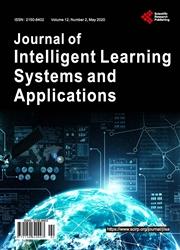A Recognition-Based Approach to Segmenting Arabic Handwritten Text
引用次数: 13
Abstract
Segmenting Arabic handwritings had been one of the subjects of research in the field of Arabic character recognition for more than 25 years. The majority of reported segmentation techniques share a critical shortcoming, which is over-segmentation. The aim of segmentation is to produce the letters (segments) of a handwritten word. When a resulting letter (segment) is made of more than one piece (stroke) instead of one, this is called over-segmentation. Our objective is to overcome this problem by using an Artificial Neural Networks (ANN) to verify the resulting segment. We propose a set of heuristic-based rules to assemble strokes in order to report the precise segmented letters. Preprocessing phases that include normalization and feature extraction are required as a prerequisite step for the ANN system for recognition and verification. In our previous work [1], we did achieve a segmentation success rate of 86% but without recognition. In this work, our experimental results confirmed a segmentation success rate of no less than 95%.基于识别的阿拉伯语手写文本分割方法
阿拉伯文手写体的分割是阿拉伯文字符识别领域25年来的研究课题之一。大多数已报道的分割技术都有一个严重的缺点,即过度分割。分词的目的是产生手写单词的字母(段)。当产生的字母(线段)由多于一段(笔画)而不是一段组成时,这被称为过度线段。我们的目标是通过使用人工神经网络(ANN)来验证生成的片段来克服这个问题。我们提出了一套基于启发式的规则来组合笔画,以报告精确的分割字母。预处理阶段包括归一化和特征提取作为人工神经网络系统识别和验证的先决步骤。在我们之前的工作[1]中,我们确实实现了86%的分割成功率,但没有识别。在这项工作中,我们的实验结果证实了分割成功率不低于95%。
本文章由计算机程序翻译,如有差异,请以英文原文为准。
求助全文
约1分钟内获得全文
求助全文

 求助内容:
求助内容: 应助结果提醒方式:
应助结果提醒方式:


